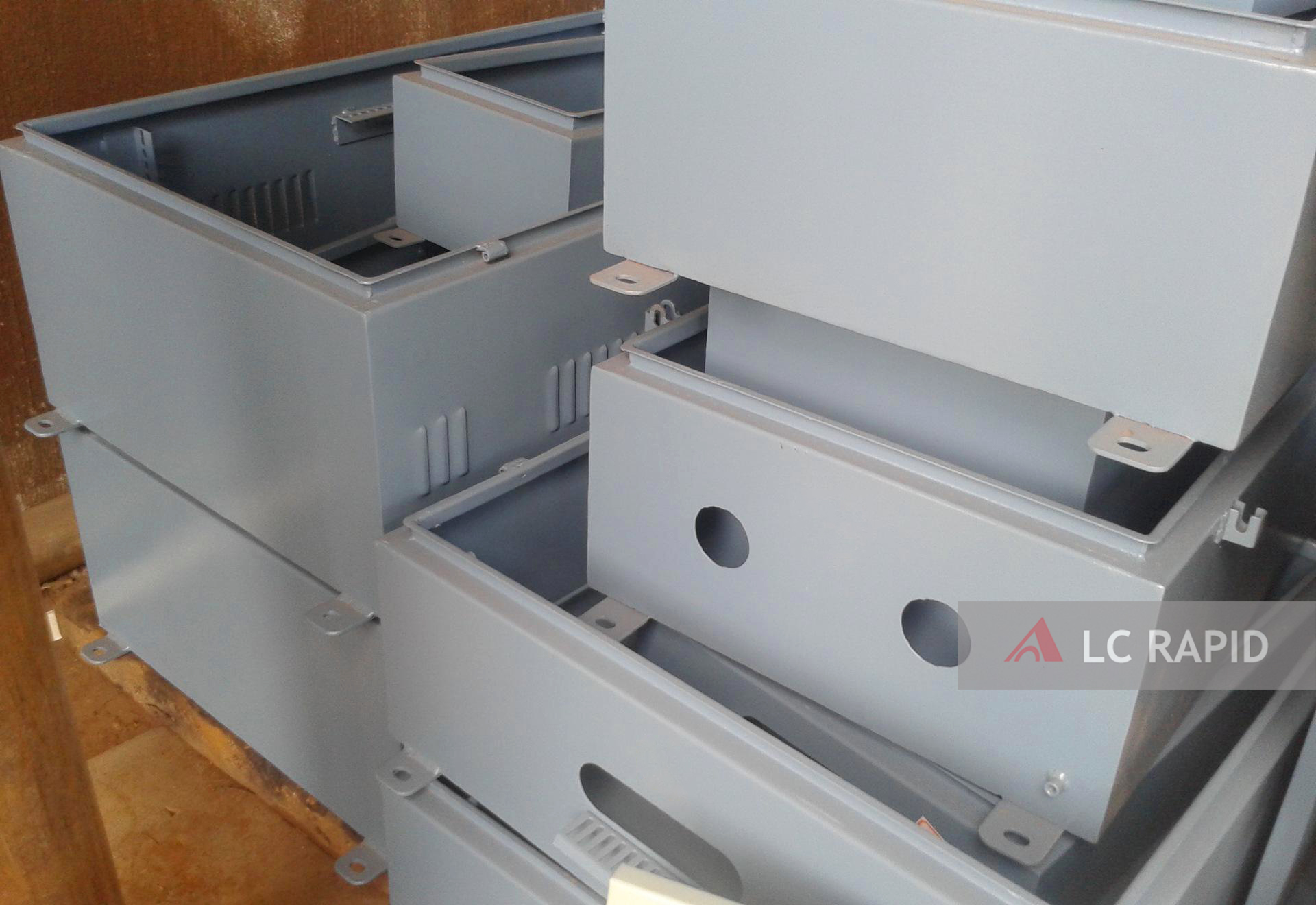+86-18898486814
sales@lcrapid.com
The production of sheet metal fabrication parts with excellent quality not only depends on high-level design, rigid quality control of production process, and superior manufacturing technologies, but also the appropriate process technologies. They must conform to the industry standard sheet metal fabrication tolerances to make the sheet metal quality inspections qualified.
The sheet metal fabrication quality control is generally divided into two aspects: external quality and internal quality. External quality control mainly means that the accuracy of the geometric size and shape of the parts meet the requirements of the drawing and no damage or pollution on the surface, and no burrs on the edges, etc. Internal quality control, according to the sheet metal quality standards, however, mainly refers to controlling the physical and chemical properties of materials after the parts are formed.

In order to maintain the sheet metal chassis which aims for high-quality work, sheet metal fabrication companies are required to have a complete and strict process system.
Sheet metal fabrication chassis is a vital part of the sheet metal fabrication industry. In the production process of sheet metal fabrication chassis, exquisite machines and corresponding technologies are the only factors to realize perfect sheet metal fabrication. Actually, the production of the seemingly huge sheet metal fabrication chassises or cabinets are all assembled from small parts.
After small parts are assembled, the production of sheet metal shell starts. In this way, the sheet metal shell can better withstand external attacks. In fact, in the seemingly simple process of sheet metal fabrication, every step requires exquisite technology to reflect its real work effect. Therefore, the disassembly methods of the sheet metal chassis are also important. Then what are the specific steps of the disassembly?
(1) The disassembly of sheet metal fabrication plant parts: remove the sheet metal parts in the damaged part of the vehicle in collision from the original body by means of cutting.
(2) Damage confirmation: after cleaning the damaged part, please confirm the extent of damage and the remediation measures.
(3) Remove the old paint film: polish the original car paint on the damaged part until the iron layer is exposed.
(4) Flattening of sheet metal parts: according to the extent of damage of the sheet metal parts, flatten the recessed parts by employing corresponding sheet metal fabrication tools.
(5) Fire treatment: By the fire treatment, the tensile and extrusion stresses generated in the process of restoring the original shape and thickness of the metal are eliminated, and then helps to maintain the rigidity and strength of the sheet metal parts.
(6) Grind feathery edges: a buffered slope is polished at the connecting part of the damaged part and the surrounding paint film, so that the newly sprayed paintwork and the original paintwork can be better connected.
(7) Apply epoxy primer: clean and degrease the polished damaged surface again, and apply epoxy primer and dry it for anti-rust treatment.
1. Process control of sheet metal fabrication quality
(1) External quality control of the parts
Except for the errors of the process equipment itself, there are four main factors that can affect the geometric size and shape accuracy of sheet metal parts:
a. Changes in the thickness of the material during forming
b. Springback after the part is formed
c. Distortion of the sheet metal parts
d. Quality of the surface and edge of sheet metal parts
These factors should be comprehensively considered in compilation with the characteristics of the parts, current status of process equipment and the qualification of the operators when specified in the process documentation.
(2) Internal quality control of the parts
When the material is made into sheet metal parts through plastic deformation, its physical and chemical properties must satisfy the design requirements, because these parts are designed on the basis of material physical and chemical properties.
In the process of sheet metal fabrication, its physical and chemical properties should be controlled in the fallowing ways:
a. Appropriate intermediate heat treatment and final heat treatment parameters should be specified and the material properties should be strictly required. For the material that is sensitive to internal stress, the stress relief process should be arranged in the forming process;
b. Using thermoforming technology to process sheet metal parts with the heating temperature and heating time strictly controlled.
c. All sheet metal parts that require intermediate annealing must be strictly controlled before annealing to avoid critical deformation.
d. Reasonably arrange the hardness inspection process of sheet metal fabrication parts.
Good sheet metal fabrication technology is an important criterion to ensure the quality of sheet metal parts. Our custom services, such as rapid sheet metal prototyping, 3d printing service china, small batch production, CNC machining, sheet metal processing, vacuum casting, 3D printing, die casting, injection molding, sheet metal and aluminum extrusion, can provide each customer with competitive solutions that exceed their requirements. No matter how complex your project is, we can always meet your needs.